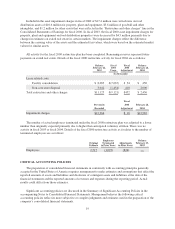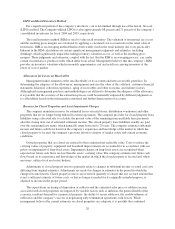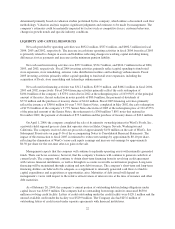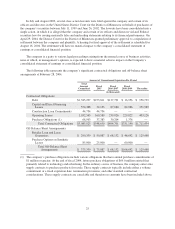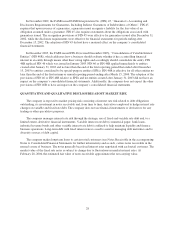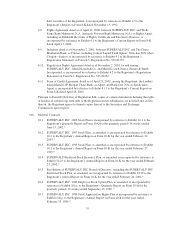Albertsons 2004 Annual Report Download - page 33
Download and view the complete annual report
Please find page 33 of the 2004 Albertsons annual report below. You can navigate through the pages in the report by either clicking on the pages listed below, or by using the keyword search tool below to find specific information within the annual report.In November 2002, the FASB issued FASB Interpretation No. (FIN) 45, “Guarantor’s Accounting and
Disclosures Requirements for Guarantees, Including Indirect Guarantees of Indebtedness of Others”. FIN 45
requires that upon issuance of a guarantee, a guarantor must recognize a liability for the fair value of an
obligation assumed under a guarantee. FIN 45 also requires statements about the obligations associated with
guarantees issued. The recognition provisions of FIN 45 were effective for guarantees issued after December 31,
2002, while the disclosure requirements were effective for financial statements for periods ending after
December 15, 2002. The adoption of FIN 45 did not have a material effect on the company’s consolidated
financial statements.
In December 2003, the FASB issued FIN 46 (revised December 2003), “Consolidation of Variable Interest
Entities” (FIN 46R), which addresses how a business should evaluate whether it has a controlling financial
interest in an entity through means other than voting rights and accordingly should consolidate the entity. FIN
46R replaced FIN 46 which was issued in January 2003. FIN 46 or FIN 46R applied immediately to entities
created after January 31, 2003 and no later than the end of the first reporting period that ended after December
15, 2003 to entities considered to be special-purpose entities (SPEs). FIN 46R is effective for all other entities no
later than the end of the first interim or annual reporting period ending after March 15, 2004. The adoption of the
provisions of FIN 46 or FIN 46R relative to SPEs and for entities created after January 31, 2003 did not have an
impact on the company’s consolidated financial statements. Additionally, the company does not expect the other
provisions of FIN 46R to have an impact on the company’s consolidated financial statements.
QUANTITATIVE AND QUALITATIVE DISCLOSURES ABOUT MARKET RISK
The company is exposed to market pricing risk consisting of interest rate risk related to debt obligations
outstanding, its investment in notes receivable and, from time to time, derivatives employed to hedge interest rate
changes on variable and fixed rate debt. The company does not use financial instruments or derivatives for any
trading or other speculative purposes.
The company manages interest rate risk through the strategic use of fixed and variable rate debt and, to a
limited extent, derivative financial instruments. Variable interest rate debt (commercial paper, bank loans,
industrial revenue bonds and other variable interest rate debt) is utilized to help maintain liquidity and finance
business operations. Long-term debt with fixed interest rates is used to assist in managing debt maturities and to
diversify sources of debt capital.
The company makes long-term loans to certain retail customers (see Notes Receivable in the accompanying
Notes to Consolidated Financial Statements for further information) and as such, carries notes receivable in the
normal course of business. The notes generally bear fixed interest rates negotiated with each retail customer. The
market value of the fixed rate notes is subject to change due to fluctuations in market interest rates. At
February 28, 2004, the estimated fair value of notes receivable approximates the net carrying value.
28



